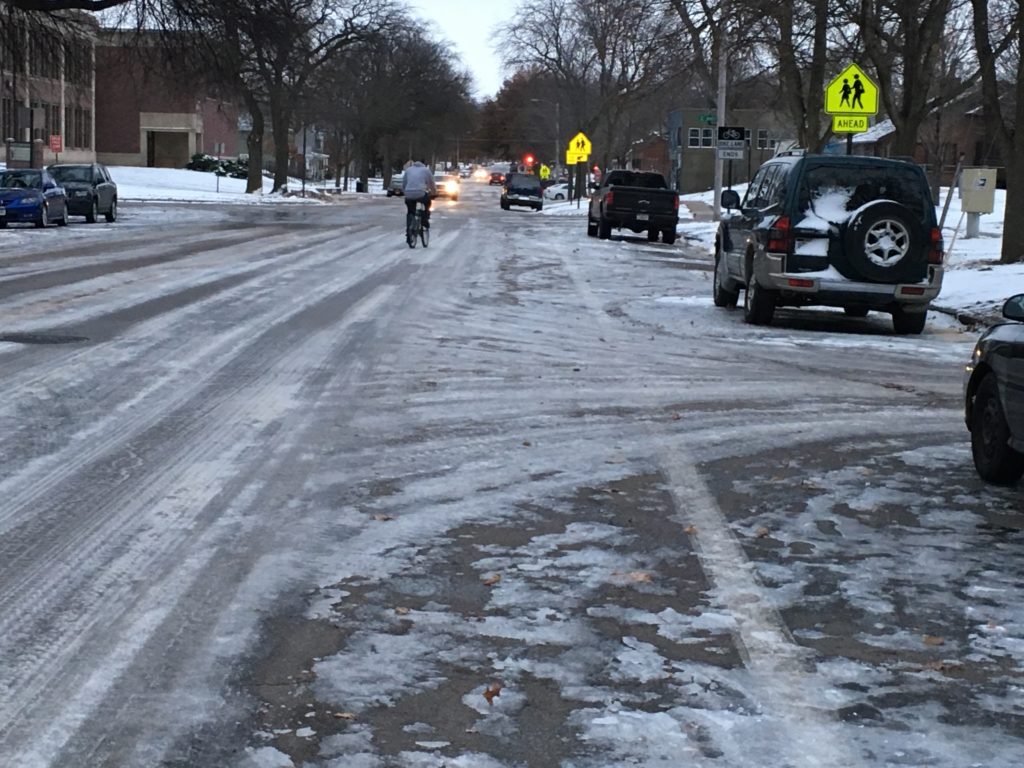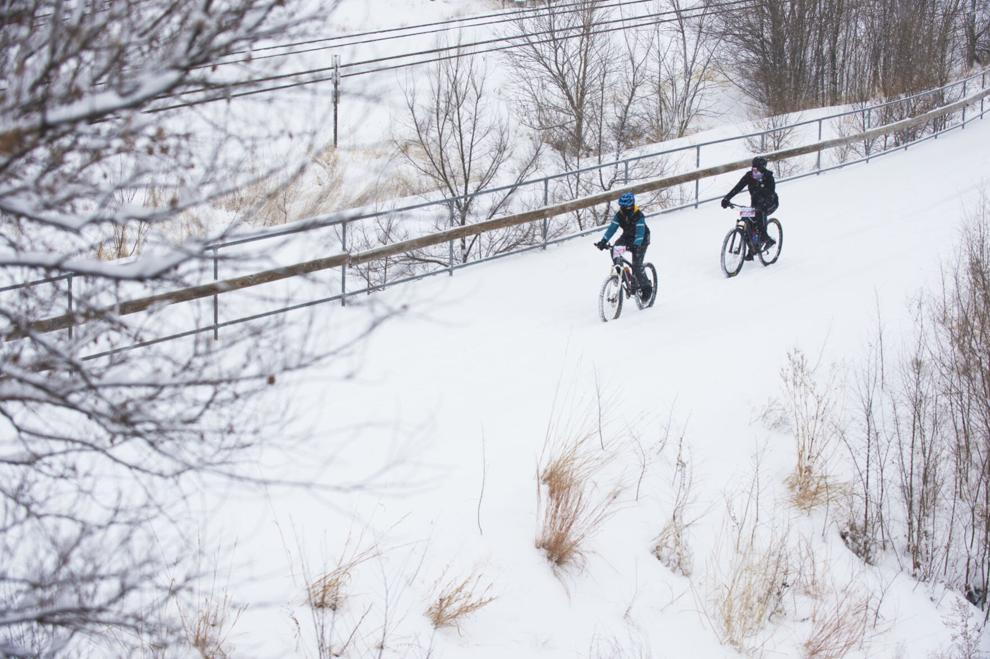Last week I revisited how to dress for cold weather commuting. Remember, there is no bad weather, only bad clothing. This week, I want to revisit the best article I’ve found that deals with how to ride on snow and ice: Winter Cycling Techniques For Any Kind Of Snow Or Ice. You don’t have to have a fat bike, though that does make it easier. Studded tires are nice, too. You can even ride with studded fat tires, but good technique alone is half the battle.
The conditions to take into consideration addressed in the article are black ice, turning, braking, studs, fresh snow, ice ruts, car-packed ice, and my least favorite: non-packing dirty street snow, or snirt. Also addressed are proper tire pressure and how to keep your water from freezing.

There’s just no indoor equivalent to riding in fresh, cold air in the winter. It’s not hard to make yourself comfortable, especially if you use some sort of pogies, like Bar-Mitts, or good lobster claws for your hands. Hand warmers in those pogies are also nice on longer rides. Also, a breathable face mask and non-fogging goggles are much appreciated.

Photo credit Jamie Wenz
Most of the challenge is mental. Properly outfitted you will not be cold, except for the first 10 minutes or so, or if you stop for a prolonged period of time. In that case you may want to bring a change of jersey and possibly gloves on a longer ride, as what you have on will be sweaty and turn cold after a longer stop for re-fueling. Also on a longer ride, you will have to pay more attention to your feet, either by wearing boots or shoe covers, and plastic bags or foil around your wool socks. Don’t be tempted to wear an extra pair of socks, as that will restrict blood circulation and make your feet colder. The article also addresses how to keep your water from freezing.
So go have some winter fun on your bike. Just remember to wipe down your chain afterwards, and keep it well oiled or you’ll have a rusty chain come spring.
